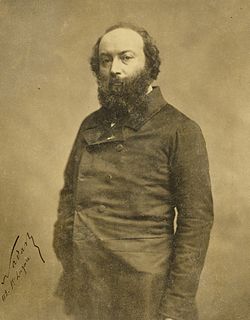

At the beginning of the XIX century, the landscape in academic painting was just a decoration for a mythological or historical event, depicted on the canvas. The romanticism that came to replace classicism began to consider this genre as an independent one, however, greatly embellishing and modifying it. The desire to see the native landscape realistic, beautiful in its natural beauty united a group of artists named after the village of Barbizon near Paris, the neighborhood of which they often wrote.
The future head of the Barbizon school, Theodore Rousseau, was born on April 15, 1812 in Paris. Love and admiration for nature sparked in him interest in painting and the desire to become an artist. From the memories of friends we learn that Rousseau has always been a tireless traveler, loved long walks. One of the early known works of the painter is stored in the Hermitage, it is called “Market in Normandy.” It shows a small town, a crowd of buyers and traders. Later, Rousseau refuses such a “populated” landscape, in his subsequent works the presence of people is sporadic. Especially the artist liked to write oaks, next to the heroic power of which people and animals look small, insignificant. Compared with the age of ageless giants, human life seems fleeting, and the vain problems of worldly life are insignificant.
Winter of 1836-1837, Rousseau spent in the village of Barbizon, the nature of these places made a great impression on him, and the artist began to come every year until he moved there definitively in 1848.
The work of Theodore Rousseau changed the view of the landscape as a genre and significantly increased its significance and understanding of what is interesting and valuable for painting. “The tree that rustles and the heather that grows,” wrote Rousseau, “is for me a great story that does not change; if I speak their language, I will speak the language of all time. “